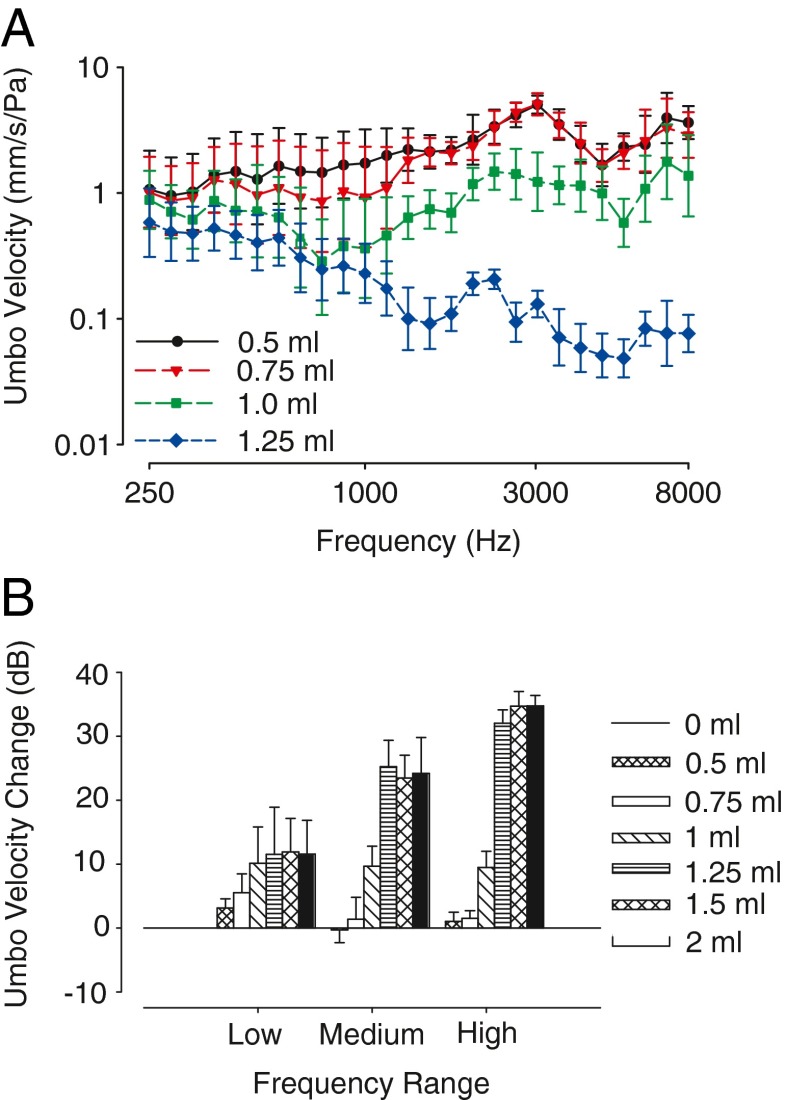FIG. 5.
Umbo velocity is reduced with increasing volume of middle-ear fluid. A Across-animal (n = 5 ears) mean umbo velocity transfer function (millimeter per second er Pascal) as a function of frequency; error bars indicate ±1 SD. As the volume of middle-ear fluid was increased from 0.5 mL, the mobility of the TM was reduced as indicated by a reduction in TM velocity. B The data in panel A were further analyzed by computing the MEE-induced change in umbo velocities relative to the baseline with no middle-ear fluid in three frequency ranges: low (0.25–1 kHz), medium (1–3 kHz), and high (3–8 kHz). For low-frequency sound stimuli, umbo velocity decreased with the addition of 0.5 mL of fluid in the middle ear. Additional umbo velocity decreases occurred with 0.75 mL and 1.0 mL of instilled fluid. Maximum changes in umbo velocities for low frequencies (~10 dB) were reached by 1.0 mL of middle-ear fluid. For medium- and high-frequency sound stimuli, decreases in umbo velocity initially occurred at 1.0 mL of fluid in the middle-ear space. Additional decreases in umbo velocity occurred with 1.25 mL of fluid in the middle ear, with no significant difference in umbo velocity decrease occurring above 1.25 mL of fluid. Maximum decrease in umbo velocity for medium- and high-frequency sounds was ~25 and ~35 dB, respectively. Baseline measurements are not shown as they are not significantly different from 0.5-mL fluid instillation values for umbo velocity measurements.

